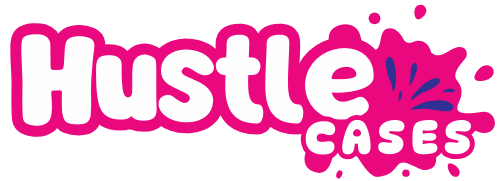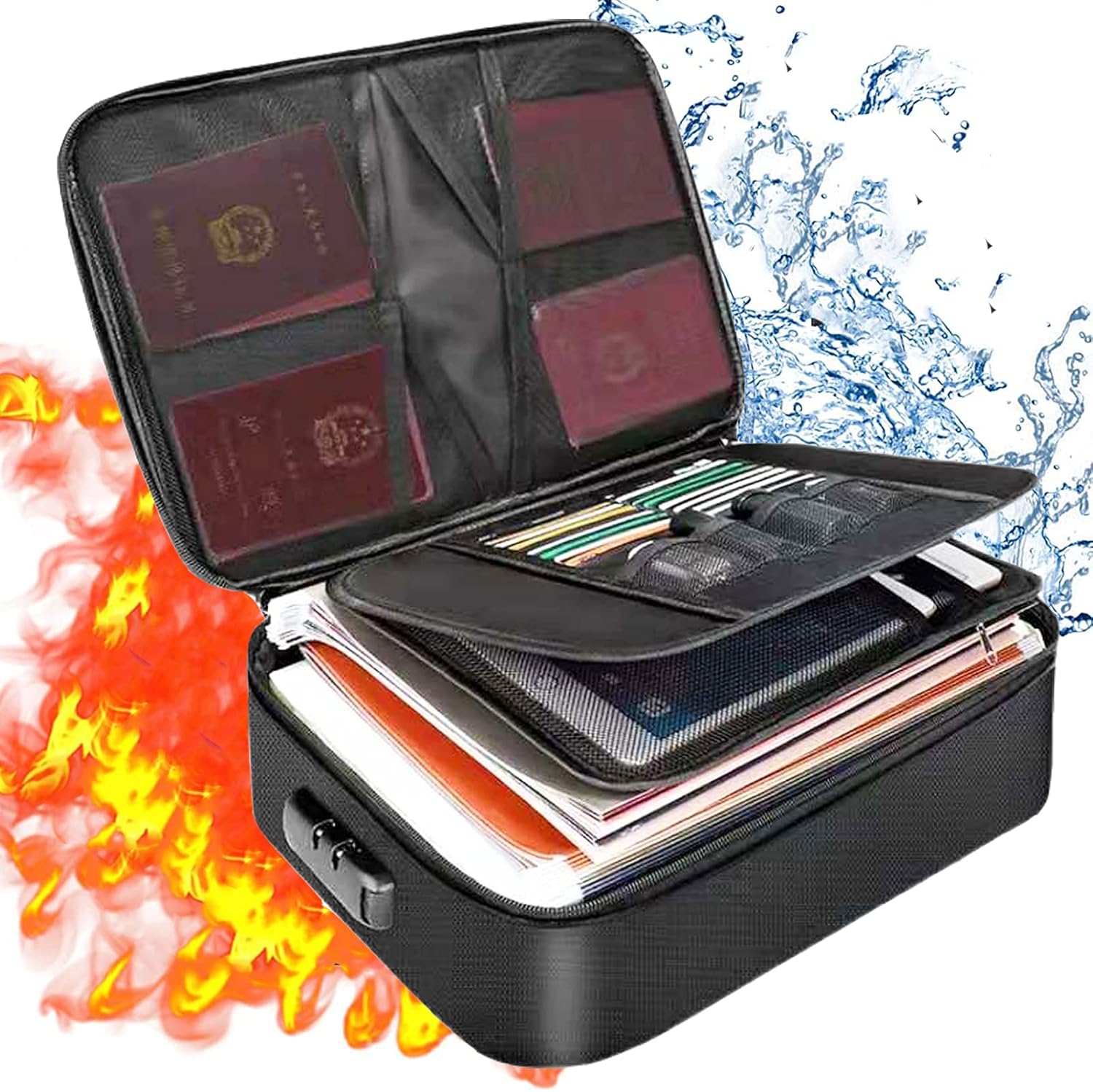Do you want to secure your important documents at your home? Find out how to ensure your important documents are safe at home by following these helpful storage and organizing strategies.
Our guide will help you secure your filing, water and fire-resistant solutions, and digital security that will help you protect against disasters, theft, and digital breaches effectively.
Table of Contents
Key Takeaways
- Secure vital documents, like documents for identification, legal papers and photos that are sensitive to protect against identity theft and ensure that they are accessible for legal and financial transactions.
- Create a thorough home filing system that includes labels that are color-coded and frequent cleaning of files to handle important documents efficiently and ensure the importance of documents.
- Improve the physical and digital security of your documents by using safes that are water-resistant or fire resistant as well as encryption technology along with cloud storage services providing quick access and disaster preparation.
Identifying Your Essential Documents
Have you ever thought about which documents are considered to be essential? They can range from:
- Personal identification documents, such as birth certificates, driver’s licences and passports
- Legal documents, such as the marriage certificate, divorce certificates and child custody documents
- Personal items like sentimental photographs and letters
- Practical things like information about the insurance policy
Similar to keeping your money secure inside your house, each documents need to be kept safe.
Having authentic forms of identification like Social Security cards, plays an essential role in preventing identity theft. They serve as an official identification documents and are frequently required for all commercial and personal transactions.
So, identifying and protecting the most important documents should be the first step towards document security.
Creating a Resilient Home Filing System
Let’s get to the underlying issue of document security the house filing system. It’s much more than storage for your documents.
It’s a meticulously planned method to manage your files, making sure that they are easily accessible in case of need and safely stored even when they’re not being used. A well-organized filing system makes use of an alphabetical or chronological system to make it easy to find.
You must create separate folders or files to store documents that require immediate attention, like taxes or bills that are due in the near future.
Also, make a designated space in your home to be your primary place to manage documents that arrive in the receipts, mail, and documents. This will help reduce clutter and helps you keep track of your routine for managing documents.
Color-Coded Labeling for Quick Access
Have you ever spent hours trying to find a particular document in a sea of similar-looking folders? This is where color-coded labels come to your aid. Utilizing colored folders to accommodate different types of document or clients can improve efficiency and organization.
Additionally, a clear labeling on the trays or folders ensures swift identification of the particular category and any action needed.
This way, managing your filing system is an easy task.
Regularly Updating and Purging Files
A well-organized filing system requires not just storing documents but also ensuring they’re relevant. Regular review and updating is essential for essential documents like wills, insurance policies and financial documents.
It is also suggested to securely eliminate old records in accordance with IRS Guidelines, and they suggest keeping tax records for a minimum of between three and seven years, based on the circumstance. In this way your filing system is modern, manageable, and clean.
Fortifying Physical Document Safety
While having a secure filing system is essential however, you should not forget the physical security of your documents.
To protect important documents from destruction, theft, and other calamities, consider the use of robust storage options like fire-proof safes security deposit boxes, and locking filing cabinets.
It is essential to keep documents in locations that maintain an unchanging temperature. Furthermore, these places should be safe from the threat of heat extremes, flooding and pests.
Choosing the Right Home Safe for Your Needs
Selecting a safe that is suitable for your needs is an important step toward document security. Fire ratings are a crucial aspect to take into account when choosing a safe for paper. Paper must not be exposed temperatures of more than 350°F.
Consider the options for locks including key, combination biometric, digital keypad depending on your individual security preferences as well as the usability.
Make sure the safe has sufficient capacity for storage and which can hold folders and files to be used for organization.
Strategic Placement of Safes in the Home
The location of your safe in your home greatly affects the security for your papers. Here are some guidelines regarding where you should put your safe
- Place it in less prominent places, like the pantry or bedroom of a child for added security.
- Safes must be secured to a surface that is suitable for them using anchor bolts, whether on a wall or floor to stop the unit from being moved, and to deter theft.
- Cover the safe by using furniture or other decorations to hide it from view.
In order to protect the safe from intrusion ensure that it is open to authorized users in the event of an emergency.
Digital Document Defense
In the modern age of technology security of digital documents is equal importance to physical documents’ security. Think about converting your documents to digital formats using tools such as Adobe Scan or mobile applications to create backups using electronic technology.
Digital copies of these can be saved in cloud or flash storage to ensure rapid access whenever needed.
However, the storage of documents digitally can also pose the issue of safeguarding the documents. It’s essential to employ encryption technology and strong password security to avoid the unauthorized access of data and data theft.
This is not just about safeguarding your online-stored documents, but also securing the devices where they are kept.
Utilizing Cloud Storage Wisely
When it is cloud storage, selecting the right one is essential. Select providers, such as Google Drive, Dropbox, or Microsoft OneDrive, that offer encryption and password protection to guarantee the security of your personal files.
If necessary you must utilize when necessary, use signed URLs to share cloud storage, and use universally-supported file formats such as PDFs for storage of documents.
Password Protection and Management
The task of remembering multiple complicated passwords can be quite a challenge. This is where password managers are useful.
Tools such as Passwarden, 1Password, LastPass as well as Google’s Password Manager are vital to manage multiple passwords, safely keeping them safe, and minimizing the possibility for weak and easily guessed passwords.
Encryption for Enhanced Security
The process of encryption, which involves transforms data that is read-able into a format that is not readable is an effective tool for security of digital documents.
Personal documents can be secured by using the built-in tools of most modern operating systems or by using third-party encryption software, which can provide additional options and levels of security.
Always update encryption software, and store secure backups of encryption keys stored in secure locations to guarantee the security of encrypted files as time passes.
Disaster-Proofing Your Document Storage
The ability to be prepared for any scenario which includes disasters, is an essential element of document security.
Bags that are fire-resistant, for example offer a convenient solution to protect documents. Although they do not offer the same degree of protection as safes that are fire-resistant however, they provide security in case of emergency for documents.
To ensure maximum flood protection, the safes must be placed above the ground preferably on a foundation secured to the structure of your home.
Also, think about making an”emergency “go-bag” with copies of important documents that can be retrieved at any moment.
Waterproof Containers and Bags
Containers and safes that are water-resistant will protect your documents from flooding damage. Some safes with water resistance even go through submersion tests to prove their capability to withstand flooding conditions.
Off-Site Storage Considerations
While having a strong document storage system in your home is essential but off-site storage options such as safe deposit boxes at banks or private facilities must be taken into consideration.
It is crucial to be aware of limitations on access and the need for insurance because the contents of deposits boxes are not FDIC insured.
Maintaining Privacy and Preventing Identity Theft
Protecting your privacy and protecting against identity theft are essential to the security of documents. Implementing a “shred-all’ rule that ensures all documents, including ATM receipts as well as bank statements and medical records, are frequently destroyed can help make sure that there is no human error when finding the security of sensitive information.
In order to safeguard you from identity theft it is crucial to:
- Review your financial statements from your credit union or bank or medical record for non-recognizable transactions or other services.
- Confirm any discrepancies, or unexpected changes
- Regularly check your credit reports for accuracy and signs of fraud using official channels like AnnualCreditReport.com.
Keeping Your Important Papers Accessible
Alongside making sure your documents are safe keeping them accessible is just as important. By organizing your documents in a systematic system, keeping track of their location and putting together an emergency bag to quickly access them can make sure that you have access your most important documents when you require they.
Informing family members and a trusted family member or relative of the location and organization of important documents will allow them to have access in times of need.
Discussions with family members regularly regarding the location and content of documents that are important, as well as notifying them of any updates can help to improve accessibility of documents.
Organizing for a Moment’s Notice
In an emergency, each second is important. A system that gives immediate access to crucial documents at the whim of a can be lifesaving.
A three-part container for files with “Do Now,” “Do Later,” and “Pending” sections can help discern the urgent from non-urgent files.
Accessibility for Family Members
Important documents should not just be accessible to you, but as well to all your relatives. Ensuring that a trusted family member is aware of the ‘Just to Be Safe document and is aware of its importance and contents can make sure that your family members are prepared in the event of an emergency.
Keep Your Important Documents Organized and Secure
To conclude the discussion, it’s evident that document security is a broad-ranging task. From identifying important documents, to establishing a robust home filing system, to strengthening the security of documents in the home safe, to ensuring digital document security protecting privacy and preventing identity theft, to the integration of technology into document security preparation, preparing is essential.
It’s not just about storing documents, but organizing, secure the documents, and making them available whenever needed.
Utilizing the techniques discussed in this guide will assist you in ensuring the security of important documents and offer security.

